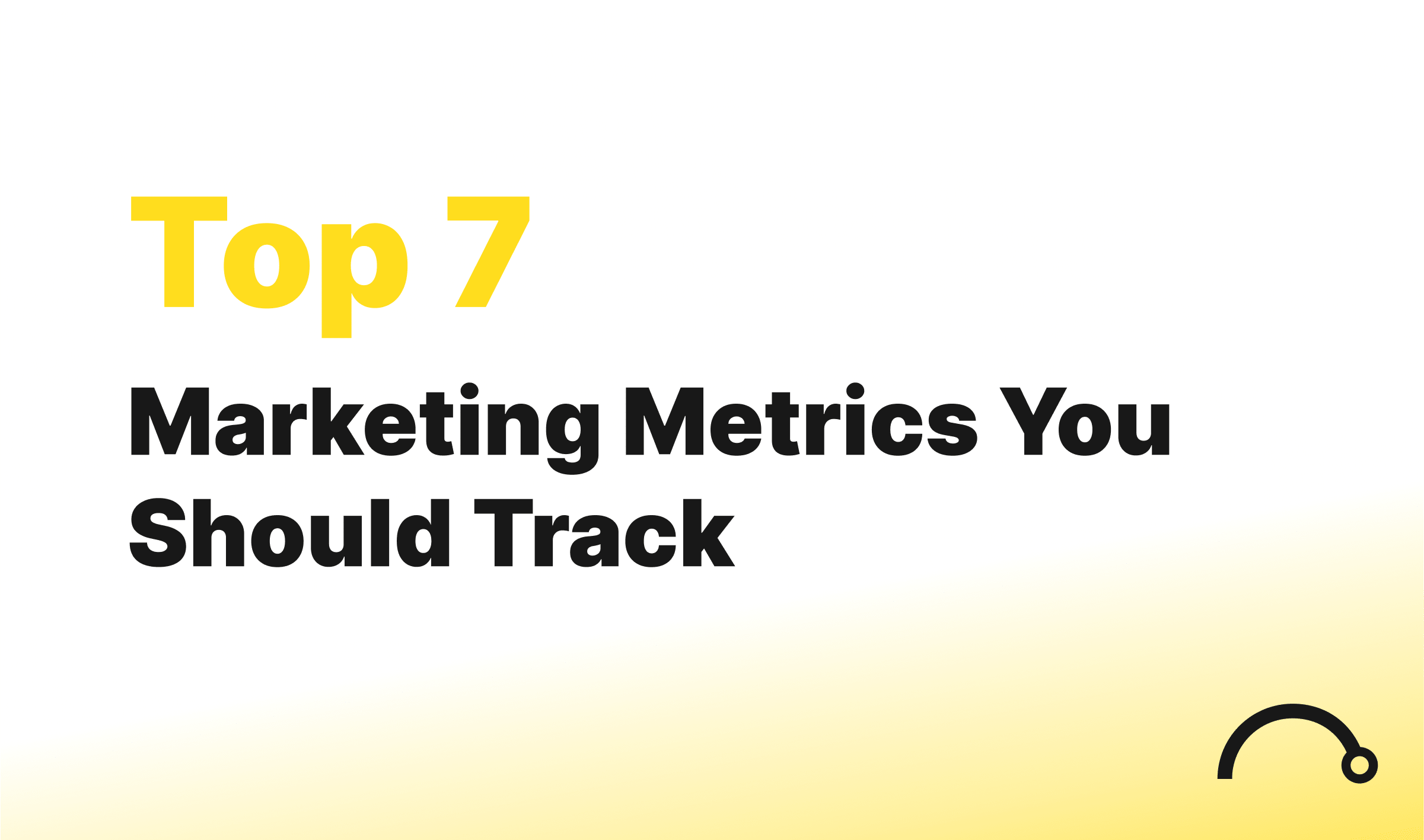Are you tracking the results of your marketing campaigns? Do you know which campaigns are converting, which ones aren’t, or which campaigns your customers are coming from?
If you can’t answer these questions, you’re not doing marketing correctly. To get the most bang for your buck, you need a clear data analysis strategy that measures each of your key performance indicators (KPIs) to better understand the performance of your campaigns and how to optimize them.
Stick around, and we will break down 8 of our top paid marketing metrics so that you can best optimize your marketing campaigns.
What are Marketing Metrics?
Marketers use marketing metrics to track, record, and measure the outcomes of their marketing campaigns over time. You can use these metrics to track the success and failures of your marketing campaigns to best enhance your advertising campaigns.
The right marketing metrics to track will have the most significant impact on your business goals, which may be sales generated for one campaign but incremental reach for another. In addition, marketing metrics assist marketers in optimizing campaigns and planning for future campaigns by allowing them to understand what’s working and what’s not.
Why you should track marketing metrics
Marketing analytics is all about discovering patterns in your data to help you make better decisions about your marketing strategy. Of course, you can examine a single platform or campaign, but analyzing numerous campaigns side-by-side is the best way to get an overall picture of your campaigns as a whole.
Understanding where your customers are and where the market is heading will be easier with this type of analysis. You can go from a reactive to a proactive approach to marketing and ensure that your efforts have the most impact and efficiency.

Top marketing metrics
These 7 barely scratch the surface of what you should be tracking but are a good start if you don’t have any tracking in place.
1. Conversions
Conversion / Sales
Conversions are used broadly when talking about meeting specific goals, whether that be a website visitor or a lead. For this example, we’re talking about customer conversions, which is when a customer purchases your product or service.
This metric is simply the number of customers you brought in during a period of time. So, for example, if you brought in 200 accounts in May, you would have 200 conversions.
2. Customer acquisition cost
Cost / Customers
Customer acquisition cost, abbreviated as CAC in marketing, refers to how much a company must spend to acquire a new customer. This metric assists business in determining whether they are getting their money’s worth when they invest in growing their clientele.
To calculate this metric, divide the total amount spent on advertising by the number of customers acquired in a given period. For example, if you spent $120,000 on advertising in May and received 300 customers, your CAC would be $400 per customer.
To get an even more accurate picture of your CAC, you should consider calculating employee salary and software costs.
Speak with experts
3. Conversion rates
Leads / Customers
A conversion rate refers to the percentage of leads that are converted to customers in a given date range. This measurement helps you figure out how many leads you need to generate to meet specific goals.
You can calculate this metric by dividing the total number of leads by the total number of customers. For example, if you need to generate 500 customers in a month and have a conversion rate of 75%, you know that you need to generate approximately 667 leads that month.
4. Return on ad spend
Revenue from ads / Cost of ads
Return on advertising spend (ROAS) is a marketing metric that measures the effectiveness of a digital advertising campaign. ROAS helps online businesses determine which advertising tactics are successful and how they may enhance their future campaigns.
To get return on ad spend, divide revenue generated from ads by the cost of ads. For instance, if you made $50,000 from customers that came in during the month of May and spent $6,000, your ROAS would be 833.33%.
5. Cost per lead
Cost of ads / Leads
Cost per lead (CPL) is the amount it costs to generate a lead on average in a period of time. Tracking the CPL is critical because it allows sales and marketing teams to set sales objectives, calculate potential ROI, and set advertising budgets.
You can calculate the CPL by dividing the total spend by the total number of leads. For example, if you spent $76,000 on advertising for May and received 320 leads, you would have a CPL of $237.5.

Pro Tip: It is critical to select metrics that reflect progress toward goals rather than vanity metrics that simply look good. For example, if your goal is to increase traffic to your website and overall conversions, seeing thousands of impressions for those ads may only appear impressive on the surface.
6. Click through rate
Displays / Clicks
The click-through rate (CTR) is the percentage indicating how many people who see your ad and end up clicking on it. You can use the clickthrough rate to determine the effectiveness of your keywords, ads, and free listings.
CTR is the number of clicks on your ad divided by the number of times it is displayed. For example, if you received 1000 impressions and 150 clicks, your CTR would be 15%.
7. Cost per click
Ad spend / Clicks
Bidding based on cost per click (CPC) implies you are charged for each time one of your ads is clicked on. Therefore, bidding methods and conversion bidding types that optimize clicks about budget size and targeted keywords depend heavily on CPC.
Cost per click is the total cost divided by the number of clicks. An example of this would be if you spent $5,000 on advertising and received 4,900 clicks, your CPC would be $1.02.
How to track your marketing metrics
To track this information most effectively, you should consolidate all of it into a single platform to easily view your ad data at a glance, rather than looking at the data on separate platforms and attempting to make sense across disparate views.
While Facebook, Google, and other platforms provide out-of-the-box analytics solutions, to aggregate and combine this data with sales data or other sources, you will need someone with expertise with business intelligence tools to ensure you have clean and accurate data.
Our team has experience developing in-depth data visualization solutions that help you glean the most valuable insights at a glance. Schedule a free consultation and see how we can help you chart success.
